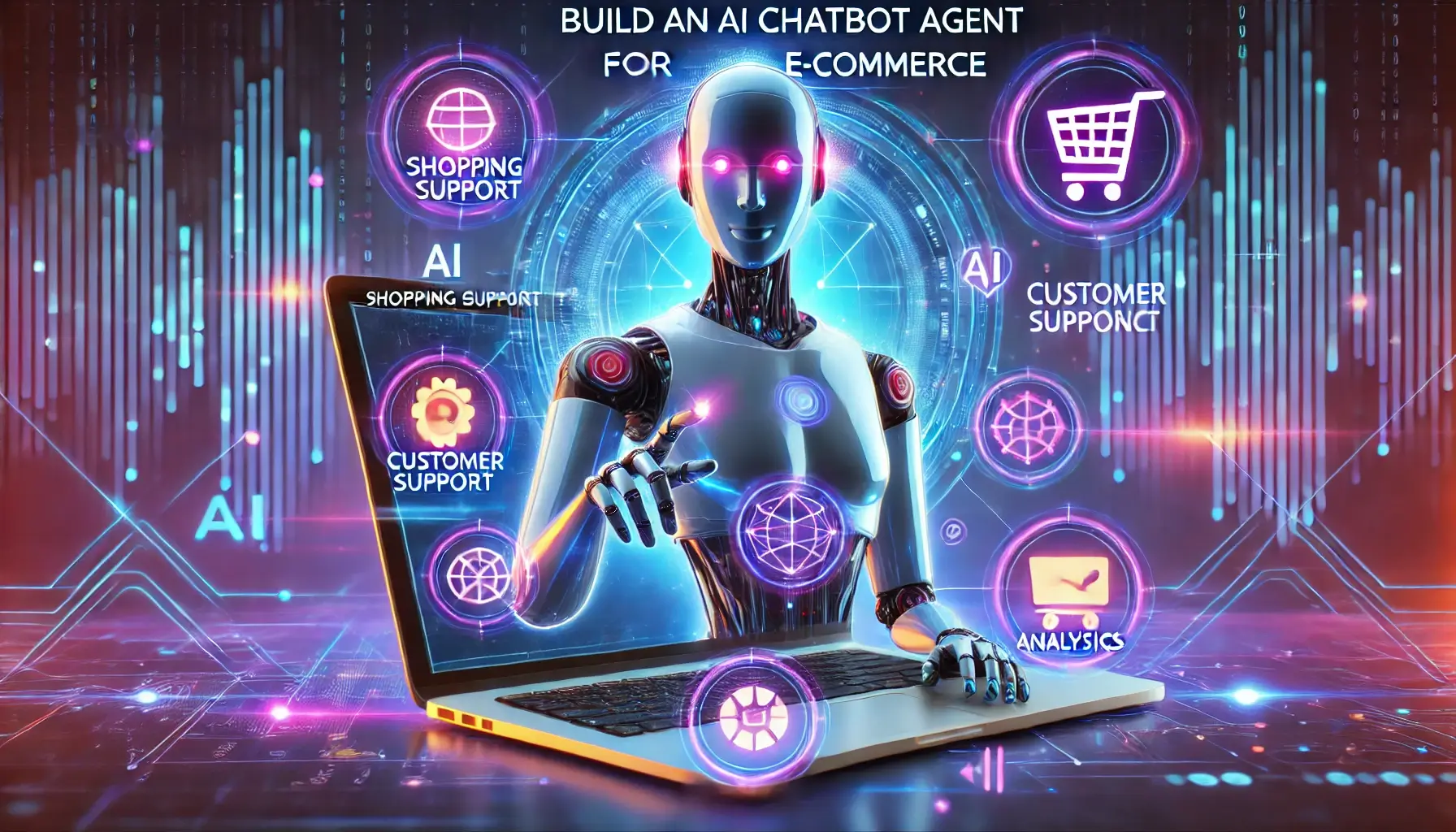In today’s digital landscape, AI-powered chatbots have revolutionized customer interactions on e-commerce websites. These intelligent agents enhance user experience, improve response times, and drive sales by providing personalized recommendations, handling inquiries, and automating customer support. In this comprehensive guide, we will walk you through the process of building an AI chatbot agent tailored for an e-commerce website.
Step 1: Define the Objectives and Features
Before diving into development, outline the primary objectives of your chatbot. Some key functionalities include:
- Product Recommendations: Suggest relevant products based on customer preferences.
- Customer Support: Answer frequently asked questions (FAQs) and resolve issues.
- Order Tracking: Provide real-time order status updates.
- Cart Abandonment Reminders: Encourage customers to complete their purchases.
- Multi-Channel Integration: Support platforms like WhatsApp, Facebook Messenger, and live chat widgets.
- Personalized Marketing: Offer discounts and promotions based on user behavior.
Step 2: Choose the Right Technology Stack
Selecting the right tools and platforms is crucial for developing an efficient AI chatbot. Some popular choices include:
- Programming Languages: Python, JavaScript (Node.js)
- AI/NLP Frameworks: Dialogflow, IBM Watson, Rasa, Microsoft Bot Framework
- Machine Learning Libraries: TensorFlow, PyTorch, spaCy
- Databases: Firebase, MongoDB, MySQL
- Deployment Platforms: AWS, Google Cloud, Microsoft Azure
Step 3: Design the Chatbot’s Conversation Flow
A well-structured conversation flow ensures that users receive relevant responses quickly. Use a flowchart or chatbot design tool like BotMock or Landbot to map out:
- Greetings and Onboarding: Welcome message and instructions for users.
- User Intent Recognition: Identifying user queries (e.g., “Find me a laptop under $1000”).
- Decision Trees: Conditional logic for different user responses.
- Fallback Responses: Handling unknown queries gracefully.
- Closing and Follow-Up Messages: Confirming user satisfaction and offering further assistance.
Step 4: Develop the AI Model
To make the chatbot intelligent, integrate a Natural Language Processing (NLP) model. Follow these steps:
4.1 Data Collection and Preprocessing
- Gather customer queries, product descriptions, and FAQs.
- Clean and preprocess the data by removing unnecessary symbols and stop words.
- Tokenize text into meaningful units using libraries like NLTK or spaCy.
4.2 Training the NLP Model
- Use pre-trained models (e.g., BERT, GPT, or spaCy’s NLP models) for improved accuracy.
- Fine-tune the model using chatbot-specific training data.
- Implement an intent classification model to categorize user queries.
4.3 Integrating Sentiment Analysis
- Use sentiment analysis tools to detect customer emotions.
- Adapt chatbot responses based on sentiment (e.g., empathetic responses for negative sentiments).
Step 5: Implement Business Logic and Backend Integration
Your chatbot needs to connect with various e-commerce systems for real-time data retrieval and actions.
- Product Database Integration: Fetch product details dynamically.
- Payment Gateway Support: Guide users through checkout and payment processes.
- CRM Integration: Store user preferences and previous interactions for personalization.
- Order Management System: Provide shipping status updates and handle returns.
Use RESTful APIs or GraphQL to enable seamless data exchange between the chatbot and the backend systems.
Step 6: Deploy the Chatbot on Multiple Platforms
E-commerce chatbots should be accessible across multiple channels, such as:
- Website Live Chat Widget: Embed the chatbot on your e-commerce site.
- Social Media Platforms: Deploy on Facebook Messenger, Instagram, and WhatsApp.
- Voice Assistants: Integrate with Alexa, Google Assistant, or Siri.
Use chatbot frameworks like Dialogflow CX or Rasa X for easy multi-channel deployment.
Step 7: Test and Optimize the Chatbot
Thorough testing ensures a seamless user experience. Conduct:
- Unit Testing: Validate individual chatbot components.
- Integration Testing: Check interactions between the chatbot and backend systems.
- User Testing: Gather feedback from real users and improve responses.
- A/B Testing: Experiment with different conversation flows and optimize conversions.
Use analytics tools like Google Analytics, Chatbase, or Bot Analytics to monitor performance and refine the chatbot’s responses.
Step 8: Enhance Chatbot Capabilities with AI Features
To make your chatbot more powerful, consider implementing:
- Voice Recognition: Allow customers to interact via voice commands.
- Multilingual Support: Provide support in different languages.
- AI-Powered Upselling: Suggest complementary products dynamically.
- Chatbot Handoff to Humans: Transfer complex queries to live agents.
- Self-Learning Abilities: Continuously improve responses through machine learning.
Step 9: Maintain and Update the Chatbot
An AI chatbot requires continuous improvements to remain relevant. Regularly:
- Analyze chatbot logs to identify weak areas.
- Update training datasets with new customer interactions.
- Enhance chatbot security to prevent data breaches.
- Upgrade the AI model with the latest advancements.
Conclusion
Building an AI chatbot agent for e-commerce websites is a strategic move that enhances customer experience, boosts sales, and optimizes business operations. By following this step-by-step guide, you can create a powerful, AI-driven chatbot that efficiently handles customer queries, recommends products, and improves overall user engagement. Start developing your AI chatbot today and transform your e-commerce business for the future!
